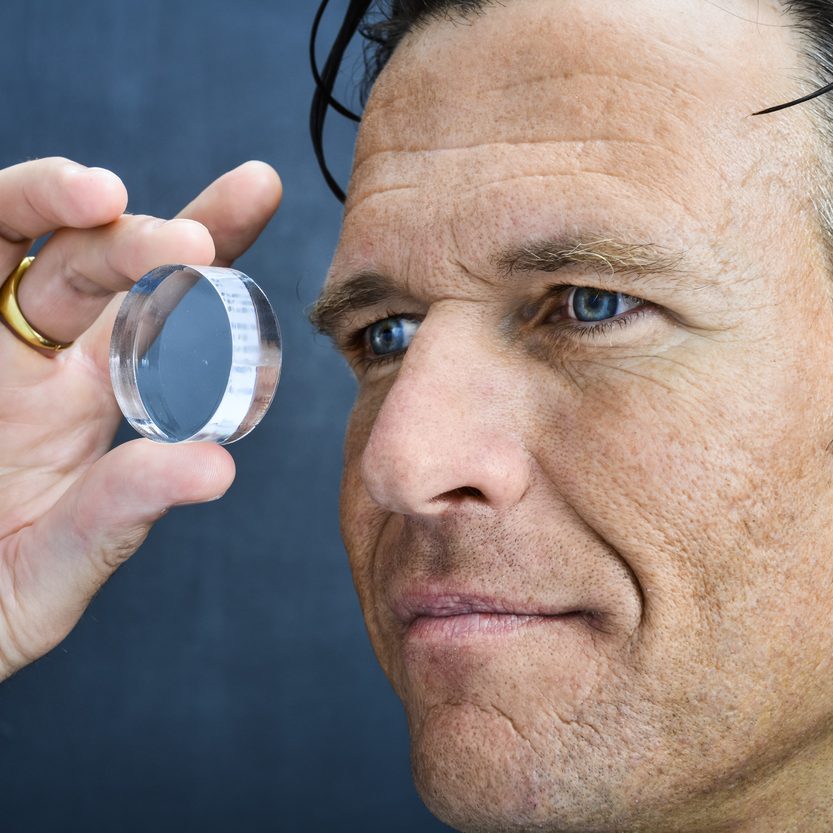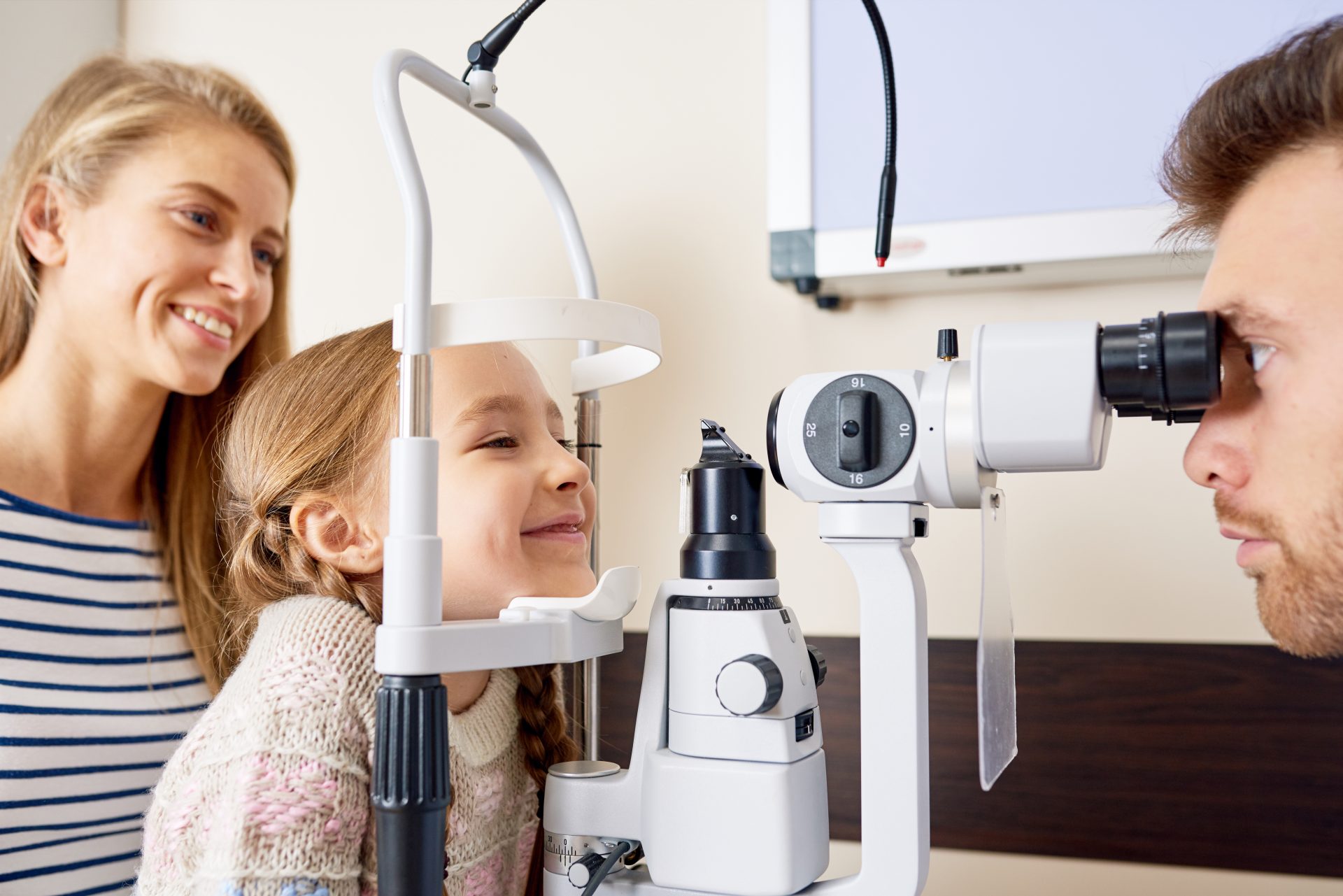
Eye conditions can affect us at various ages and stages in life, and sometimes without obvious symptoms. We shine the light on some of the usual culprits that can cause vision problems – all of which can be picked up in a comprehensive eye test with one of our expert independently-owned optometrists. Here’s our run-down of common eye conditions and eye problems:
Long-sightedness
Long-sightedness, or hyperopia, is a common vision problem among these eye conditions and problems, that affects your ability to see up close. People can usually see distant very well, but have difficulty seeing objects that are close up. This affects tasks such as reading and writing. Long-sightedness is commonly treated using corrective lenses, glasses or contact lenses. Someone who is long-sighted may have difficulty seeing objects up close, blurred vision, eye fatigue and strain, crossed eyes in children, headaches and poor concentration.
Short-sightedness
Short-sightedness, or myopia, is an eye condition that affects your ability to see clearly in the distance. You experience blurred distance vision but generally still maintain clear near vision. Short-sightedness is commonly treated using corrective lenses, glasses or contact lenses. Someone who is myopic or short-sighted is likely to experience blurred vision when watching or playing sport, looking at the whiteboard, reading street signs and watching television.
Presbyopia
Presbyopia is the gradual change in a person’s sight after the age of 40. It is caused by the eye’s inability to focus at short distances. People with the condition often have trouble reading the menu in a restaurant, threading a needle and reading fine print. Presbyopia can be corrected very simply with glasses or contact lenses. Multifocal lenses provide natural vision at short and long distances and everything in between. A regular eye exam is required as your ability to focus declines in order to update your lens prescription every few years.
Astigmatism
Astigmatism is a common eye condition that occurs because the eye is shaped more like a football or the back of a spoon, instead of being spherical in shape. This causes the light entering the eye to bend more in one direction than the other. In minor cases common symptoms of astigmatism include eye strain, fatigue, reduced concentration and discomfort while higher degrees of astigmatism can cause images at all distances to be distorted and blurred. Astigmatism is commonly treated using corrective lenses, glasses or contact lenses.
Asthenopia and Digital Eye Strain
Eye strain, or ocular fatigue is the condition that occurs when our eyes become fatigued after extended use, particularly in dimly lit rooms or in front of digital devices. Symptoms include pain around the eyes, headaches, blurry vision, sensitivity to light and sore, tired eyes. As more and more of us embrace a digital life, we can spend an inordinate amount of time in front of screens – a staggering 3,431 hours a year, on laptops and phones. The condition, affecting as many as 2 in 3 people, has been dubbed digital eye strain, and can also lead to neck/shoulder pain and headaches. Thankfully there are now digital lenses designed to help alleviate these symptoms so that we can comfortably go about our busy digital lifestyle!
Binocular Vision Problems & Lazy Eye
Binocular vision problems occur when both eyes cannot maintain focus on one point at the same time to create a single image, causing depth perception problems and difficulty judging distances effectively. Lazy eye is a main cause of binocular vision deficiencies. When the brain doesn’t receive the same visual information from both eyes, it can effectively ‘switch off’ or ignore the image in one eye in order to obtain a clear picture and avoid confusion. The most effective strategy for overcoming binocular vision deficiencies is vision therapy or training with a behavioural optometrist, and is best commenced as early as possible.
As binocular vision skills develop in the first few years of life, it’s important for parents to ensure that children are examined before starting school to assess their vision. A child with binocular vision problems will more than likely experience learning difficulties, which can have a broader impact on their development, confidence and wellbeing.
Colour Deficiency Blindness
Most colour vision problems are inherited and affect approximately 10% of men, and an extremely small number of women. ‘Colour blindness’ most commonly presents as confusion between red and green. With this deficiency certain shades of red, green and yellow appear grey but many colours, especially purples and blues will appear normal. Absolute colour blindness, that is the inability to see colour at all, is extremely rare though it does exist. Whilst there is no cure for inherited colour vision problems, tinted lenses and lenses that reduce glare may be prescribed to improve contrast between colours.
Book an eye test today
Regular eye tests every two years are crucial for managing your vision throughout your life, and diagnosing any vision problems or eye conditions early. Our community of optometrists are dedicated to helping you see more clearly, and maintain healthy eyesight over a lifetime. Our optometrists will take the time to get understand how you use your vision and examine the health of your eyes, including 9 other holistic factors to ensure healthy vision.
Find your nearest optometrist now
*This information is provided as a reference only and should not be used in place of expert advice from your optometrist.


